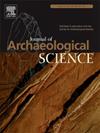Ancient DNA insights into Neolithic bone-tool use on the Tibetan Plateau
IF 2.6
1区 地球科学
Q1 ANTHROPOLOGY
引用次数: 0
Abstract
Bone tools are an important component of human material culture and contain rich information about ancient cultures and technologies. The selection strategies of prehistoric humans for bone-tool materials in ultra-high-elevation regions represent a cultural adaptation to extreme environments characterized by cold and hypoxia. Current research on bone tools predominantly emphasizes artifact description, typological analysis, and processing methods, while study on the source of the bone-tool materials is less due to the method limited. The Mabu Co site (4420–4465 m a.s.l.) is the world's highest site with sedentary lifestyle supported by fishing and hunting in the high-elevation interior of the Tibetan Plateau more than 4000 years ago. Commonly excavated bone tools at this site include bipoints, ornaments, bone awls, needles. This study selected several fragmented bone tools from the site and used ancient DNA technology to identify the species to learn the humans' selection strategies for materials. The results show that the long bones of argali (Ovis ammon) and blue sheep (Pseudois nayaur) were used to make bone awls. The limb bones of animals with thin-walled bones such as Himalayan musk deer (Moschus leucogaster) were used to make bone needles. For bone bipoints, which were likely used for fishing and bird hunting and were in high daily demand at this lakeside village, species of water birds, including the abundant cormorant (Phalacrocorax carbo) and the occasional crane (Grus sp.), were used. Our study reveals that the ancient people living on the Tibetan Plateau 4000 years ago strategically selected bone-tool material from local animal resources, demonstrating a preference and consideration of different types of bone to suit the tool. By using ancient DNA technology to analyze the source material of the bone tools excavated from archaeological sites, our understanding of the organic artifacts is enhanced.
青藏高原新石器时代骨工具使用的古代DNA洞察
骨制工具是人类物质文化的重要组成部分,包含了丰富的古代文化和技术信息。史前人类在超高海拔地区对骨工具材料的选择策略代表了对以寒冷和缺氧为特征的极端环境的文化适应。目前对骨工具的研究主要集中在器物描述、类型学分析和加工方法等方面,由于方法的限制,对骨工具材料来源的研究较少。Mabu Co遗址(海拔4420-4465米)是世界上海拔最高的遗址,4000多年前,在青藏高原高海拔的内陆地区,人们以捕鱼和狩猎为生活方式。该遗址出土的常用骨工具包括双尖、装饰品、骨锥、针等。本研究从该遗址中选取了一些破碎的骨工具,并利用古代DNA技术对物种进行了鉴定,以了解人类对材料的选择策略。结果表明,用泥鳅长骨和蓝羊长骨制作骨锥。喜马拉雅麝(Moschus leucogaster)等骨骼薄壁动物的肢骨被用来制作骨针。对于可能用于捕鱼和捕鸟的骨双点,使用了水鸟物种,包括大量的鸬鹚(Phalacrocorax carbo)和偶尔的鹤(Grus sp.)。我们的研究表明,4000年前生活在青藏高原的古代人从当地的动物资源中策略性地选择骨工具材料,显示出不同类型的骨头适合工具的偏好和考虑。通过使用古代DNA技术分析考古遗址出土的骨工具的来源材料,我们对有机人工制品的理解得到了加强。
本文章由计算机程序翻译,如有差异,请以英文原文为准。
求助全文
约1分钟内获得全文
求助全文
来源期刊

Journal of Archaeological Science
地学-地球科学综合
CiteScore
6.10
自引率
7.10%
发文量
112
审稿时长
49 days
期刊介绍:
The Journal of Archaeological Science is aimed at archaeologists and scientists with particular interests in advancing the development and application of scientific techniques and methodologies to all areas of archaeology. This established monthly journal publishes focus articles, original research papers and major review articles, of wide archaeological significance. The journal provides an international forum for archaeologists and scientists from widely different scientific backgrounds who share a common interest in developing and applying scientific methods to inform major debates through improving the quality and reliability of scientific information derived from archaeological research.
 求助内容:
求助内容: 应助结果提醒方式:
应助结果提醒方式:


